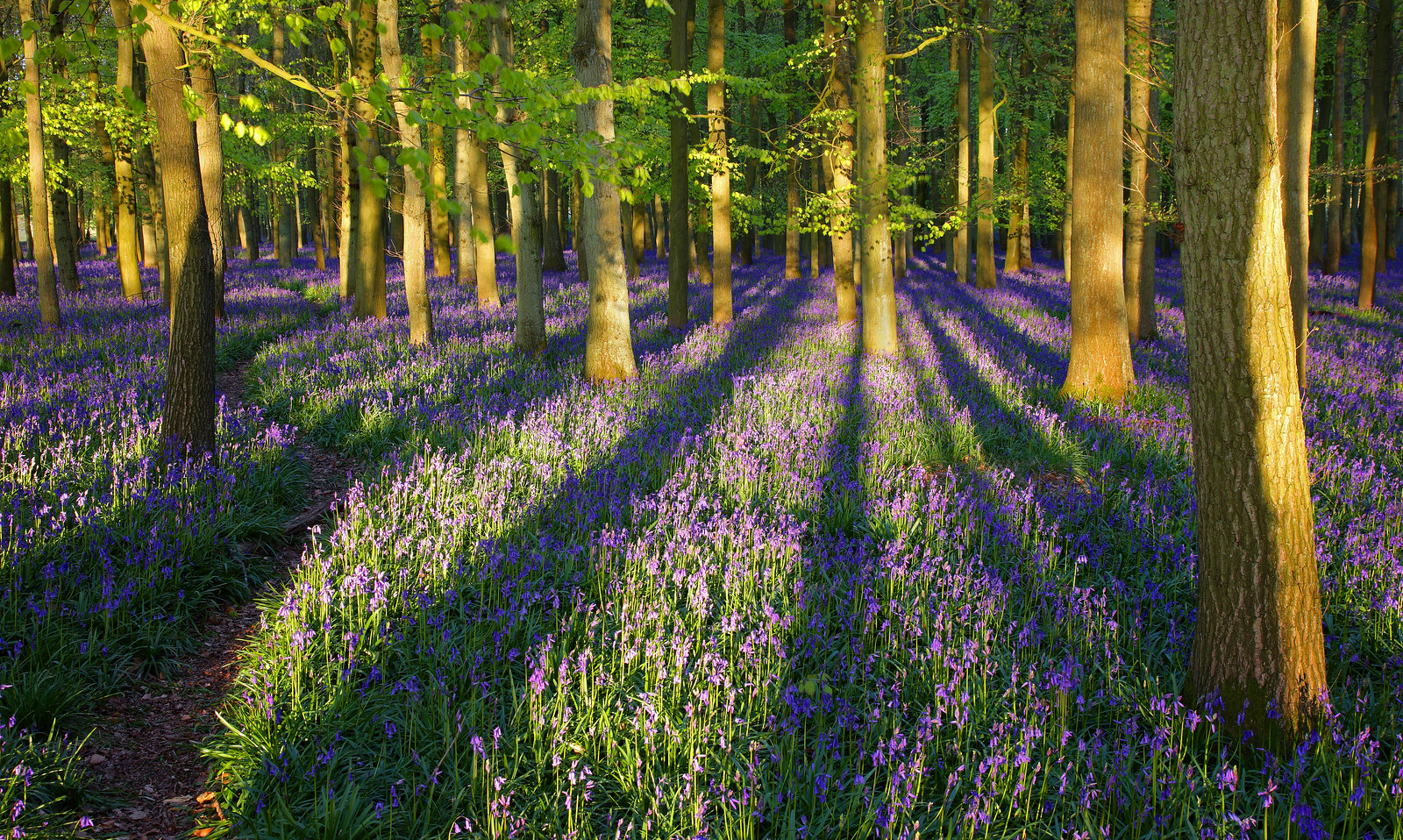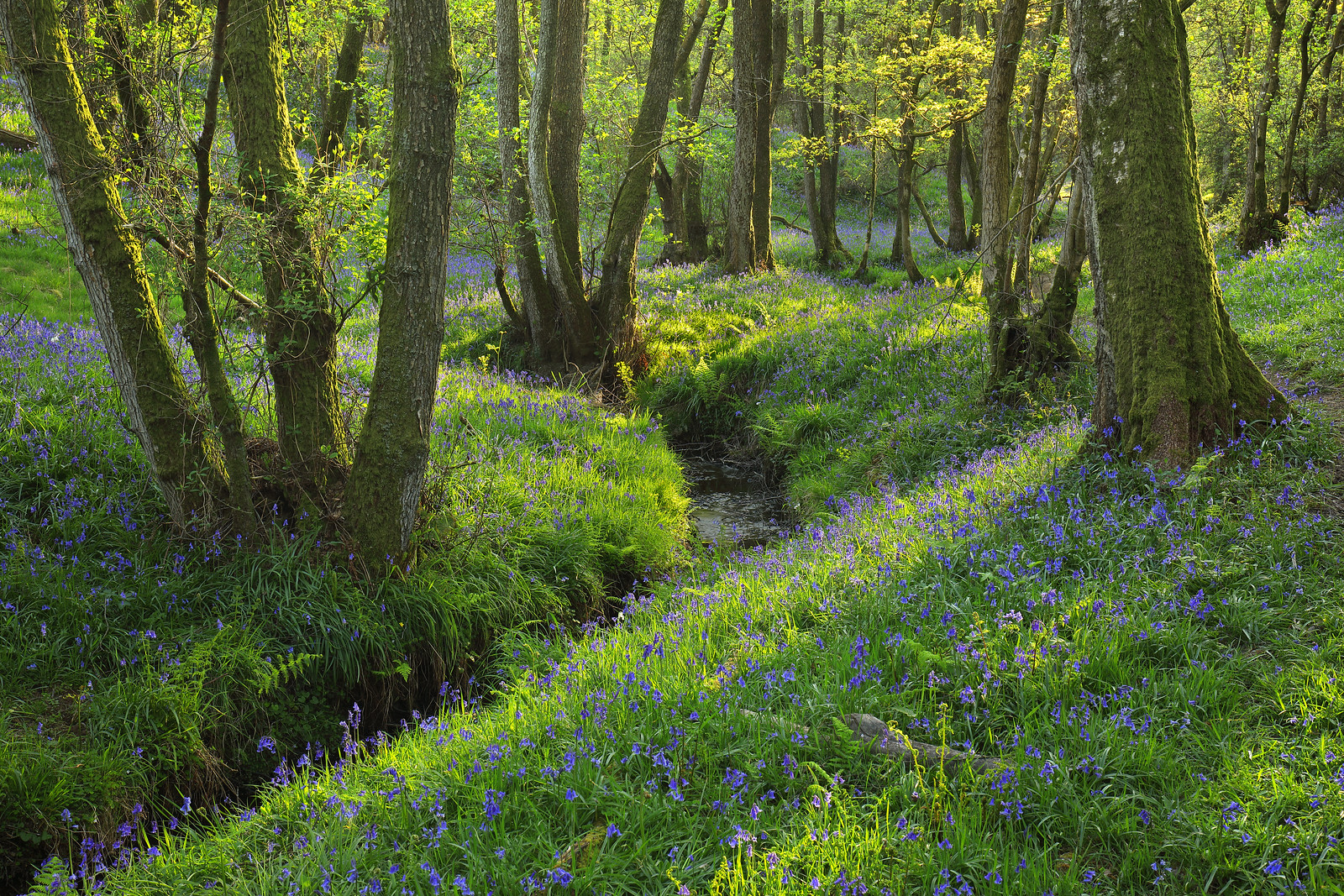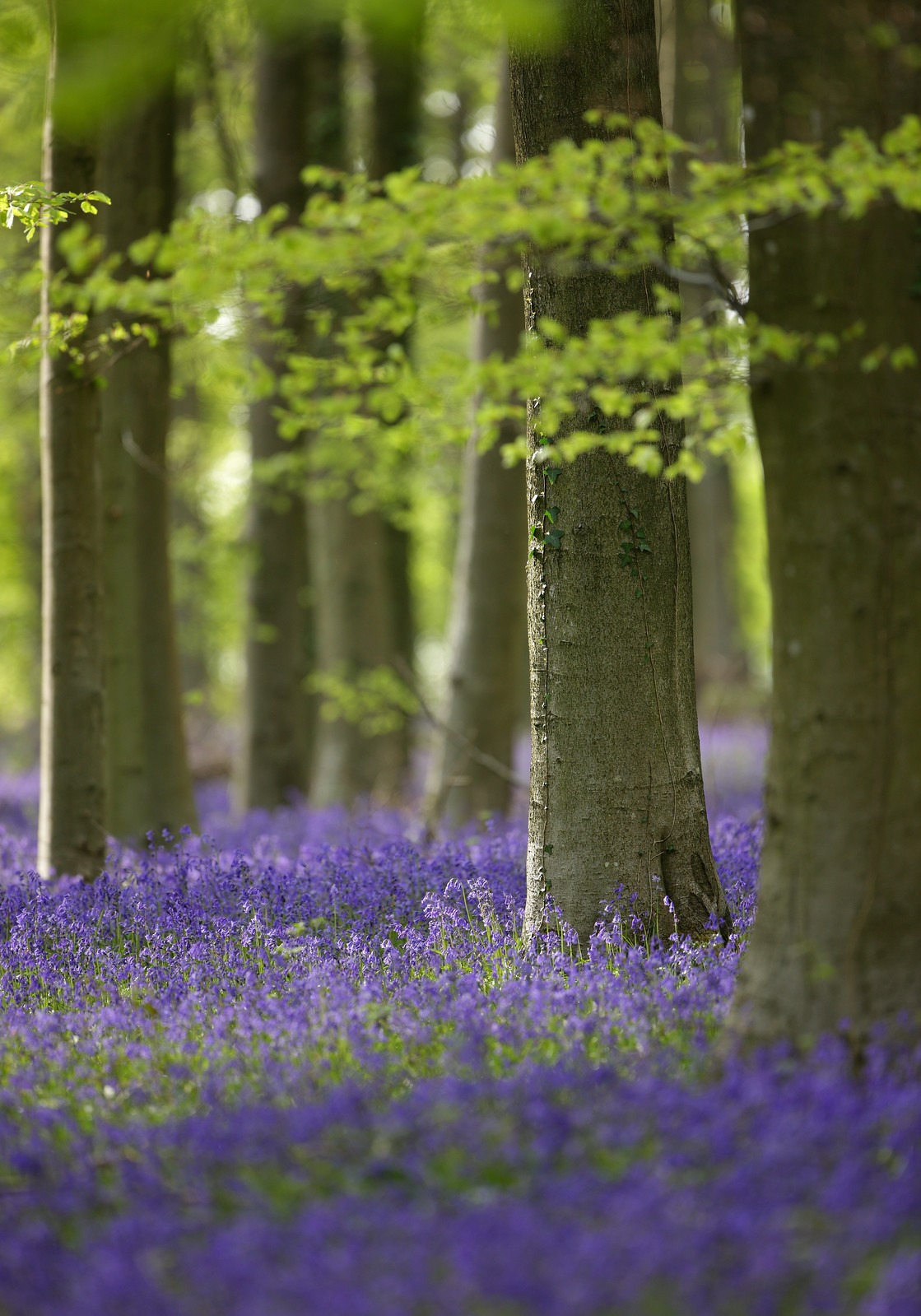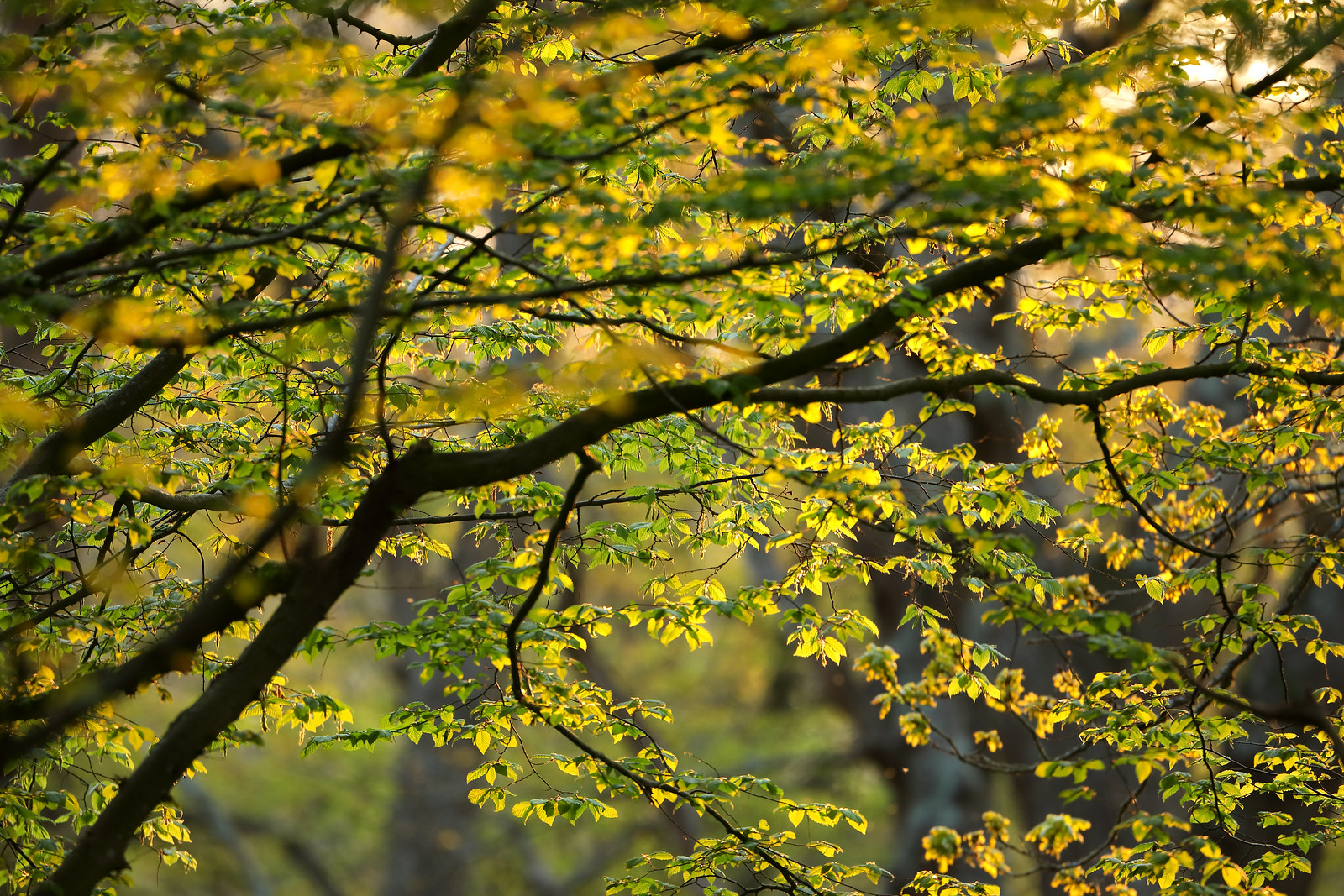Best of Bluebells: 2013 - 2021
The UK hasn't enjoyed the best of spring weather in 2021. Below average temperatures and lack of rainfall left flora about 20 days behind normal growth levels. Climate change is now causing high pressure systems to stall, resulting in long periods of dry, but above or below average temperatures. Apart from three recent visits to Abbot's Wood, limited opportunities for taking pictures this spring prompted me to look back on the many arduous memories of trips to bluebell woodlands over the last eight years, excluding 2020 because of the pandemic. Seeing trees and the forest floor wake up signals the end of winter and the start of a new growing season for birds, mammals and plants.

Mid-Sussex, May 2016.
Abbot's Wood, East Sussex, April 2016.
Abbot's Wood, East Sussex, April 2019.
Dockey Wood, Buckinghamshire, April 2015.
Itchen Wood, Hampshire, April 2019.
Micheldever Wood, Hampshire, April 2019.
Mid Sussex, May 2019.
Mid-Sussex, May 2019.
Mid-Sussex, May 2019.
Lower Stumble Wood, West Sussex, April 2013.
Abbot's Wood, East Sussex, April 2016.
West Wepham Wood, West Sussex, May 2016.
Wellgrove Wood, West Sussex, April 2014.
West Wepham Wood, West Sussex, May 2016.
Highlands Wood, East Sussex, April 2021.
I had booked leave in anticipation of another early bloom in 2021, but cold, dry spring weather led to bluebells and leaf cover being delayed. I turned my attention to birds at Cuckmere Haven and Woods Mill Nature Reserve, just as temperatures reached average levels. After one week of sunshine, this was just enough to bring out wood anemones and bluebells in the predominately Hornbeam populated Abbot's Wood, in East Sussex. It's always a good idea to say hello to local people, who walk in the area every day. Thanks to the directions provided by two Irish women out with their dogs, I located a hidden bluebell wood to the north, called Highlands Wood. If I hadn't spoken to them or passed at a different time, I'd never have discovered this hidden gem, known only to people who've been walking here for longer than anyone else. The woodland experience took me out of reality and into a much better space, worth mentally replaying for days afterwards.
As with other detail shots on this page, I used a super-telephoto lens to compress several visual elements spaced many metres apart in a single frame. People often feel bowled over by bluebell woods and excitedly abandon basic compositional techniques on a trigger-happy binge, but this doesn't matter much. I'm sure there are many activities I would enjoy without being good at them and the last thing I'd want is an expert telling me how to 'improve'. Too many people don't have hobbies because they're afraid of being bad at them, but my advice is to enjoy your interest in photography whatever 'level' you're at. Being good at something has enough downsides not to recommend it — I carried a bag many people could barely lift off the ground for a total of ten miles from Polegate Station and back. Sometimes, I wake up in the morning, having made plans, only to cancel them and stay in my pyjamas all day.

Just like the weather, most birds deserted me on my annual leave, but this bold Robin joined me in the hope I might bring out a shovel and dig up some worms. British robins have evolved to seek feeding opportunities within very close proximity to humans. Their European counterparts are wary of humans, but will instead follow wild boar, which also dig up soil. As ever, no-one can rely on the British weather, but it's quite touching when a Robin makes up for everything with a sing-song! I was also delighted to find a nest of Blackbird eggs in the base of a Hornbeam tree. After spending five minutes at the nest, I retreated to watch mum and dad return to their untouched eggs.
If the mixed weather had a silver-lining, it gave me the opportunity to relax and enjoy my time off. For many, hobbies are a vehicle of social upward mobility rather than a way to unwind from professional responsibilities. It's no longer enough to cycle in the fresh air, enjoy beautiful scenery and be healthy. Today, you're not doing it correctly, unless your fitness tracker logs blood oxygen saturation and you aspire to climb hills like a solicitor called Ben, who rides a £5000 carbon-fibre bike at weekends. Consider the amateur photographer, who once hired me to help them move up a league table in a national competition, despite working punishing hours and raising a family. Lost in the chase for validation is the simple pursuit of modest competence. I've spent the last year being hyper-vigilant in daily close contact with non-masked hospital discharge patients, and all without a vaccine. I want to move away from the professionalisation of leisure time. What have I got to prove with my photography? I took one really good bluebell photo this year, met friendly locals and discovered a new woodland and that's good enough for me.
UPDATE: I enjoyed one final
chance to photograph the bluebells on May 24th in a sheltered
forest valley on the High Weald. My image captured the unusual
lighting conditions that occur when the sun begins to appear
behind very dark clouds. The bluebells here are always late to
flower and can persist until June. By coincidence, my first ever
visit to this magical place was May 24th 2012, when the
temperature reached 27°C. In
contrast, yesterday reached the dizzy heights of 12°C, falling
to 7°C as I sheltered under a tree during a rainstorm.
The ecology of this woodland differs
from beech dominated woods, such as Micheldever, where dense
leaf cover prevents any competitor plants from growing. The
presence of a stream and late leafing trees allows many plants
to flourish. But heavy clay stops bulbs from growing deep roots.
The bluebells here will never be dense or tall.
The sun disappears from the bluebell
wood at around 18:00, but my usual evening of deer stalking came
to a prolonged end when a two hour rain deluge left me marooned
a good 30 minutes walk from where I'd chained my bike. I was
forced to pack up and trudge through heavy, saturated ground,
before unchaining the bike and loading the panniers with one
hand, the other holding my umbrella. When the rain finally
stopped, I made my way down to the station. It's not fun
speeding down a wet road at 35mph without mudguards, but at
least my bike got cleaned.


















Comments